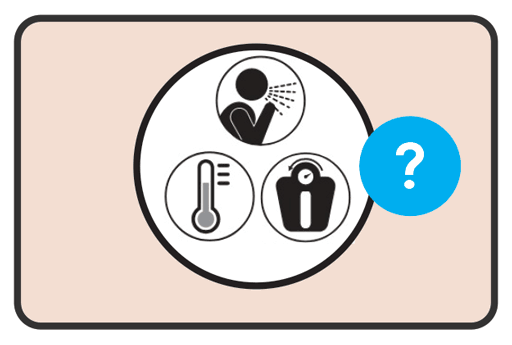Book traversal links for 6.2.1 Symptom screening

Any child < 15 years who has had close contact with someone with TB disease should be screened for TB with a symptom screen and/or CXR as part of active contact-tracing (see Algorithm A.5.1 in Annex 5). Symptoms that should be used to screen for TB are cough, fever and poor weight gain (or weight loss). In young children, reduced playfulness or lethargy should also be included in symptom screening; cough may be absent. It is useful to examine growth charts regularly to determine whether a child has been losing weight or their weight has plateaued. A plateau in weight gain should be a warning sign for possible TB. In the latest review, a symptom screen in which a child has any of the symptoms of cough, fever or poor weight gain has a sensitivity of 89% and a specificity of 69% for TB disease (against a composite reference standard) (see Web Annex B of the screening guidelines).
The low specificity of a symptom screen alone means that about 30% of children may undergo unnecessary diagnostic tests or even treatment for TB. The risk of a false-positive diagnosis of TB after a false-positive symptom screen among children may be higher than for adults because such a diagnosis is frequently made solely on clinical grounds. Because of the high rates of mortality and morbidity among children with TB, however, the risk of a missed diagnosis is generally judged to outweigh the risk of a false diagnosis and unnecessary TB treatment, especially because children generally tolerate TB treatment and TB preventive treatment well. Health-care workers should nonetheless remain vigilant to possible false-positive TB diagnoses among children, monitor their response to treatment carefully and consider alternative causes, especially if a child is not improving on treatment. If a plausible alternative diagnosis is confirmed, providers may consider stopping TB treatment while remaining mindful that TB may co-exist with other diseases.
 Feedback
Feedback